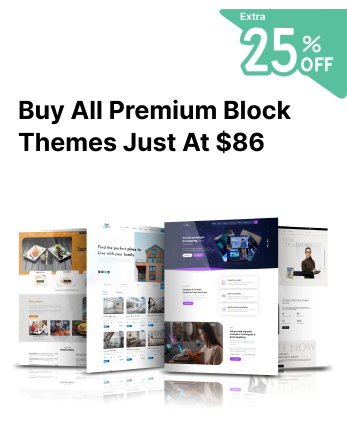Introduction
In the digital age, your website serves as the storefront of your business, and when it comes to online stores, ecommerce website design plays a crucial role in shaping customer experiences and driving conversions. Simply put, ecommerce website design refers to the layout, structure, visuals, and usability of an online store. It’s not just about making a site look attractive; it's about creating a seamless shopping experience that encourages visitors to browse, trust, and make a purchase.
A well-crafted ecommerce website design combines aesthetics with functionality. It ensures that users can easily navigate the site, find products, and complete purchases without frustration. From the placement of call-to-action buttons to the speed at which pages load, every design element influences a shopper’s behaviour. A poorly designed website can lead to high bounce rates and abandoned carts, while a high-converting design can significantly boost sales and customer retention.
Whether you're launching a new store or revamping an existing one, focusing on strategic ecommerce website design features can make all the difference. In this blog, we’ll explore 10 must-have design elements that will help turn visitors into loyal customers.
At Creta Themes, we craft premium WordPress block themes designed for high performance, lightning-fast loading, full responsiveness, and built-in SEO optimisation, building stunning, user-friendly websites that engage visitors and drive conversions effortlessly.
Must-Have Features for a High-Converting Ecommerce Website Design
1. Mobile-Responsive Design

Importance of Mobile Shopping Trends:
-
Over 60% of online shoppers use mobile devices to browse and make purchases.
-
Mobile commerce (m-commerce) sales continue to grow rapidly year after year.
-
Consumers expect fast, smooth mobile experiences or they abandon the site.
-
Search engines like Google prioritize mobile-friendly sites in search rankings.
-
Social media-driven shopping often starts on mobile platforms.
How Responsive Design Improves User Experience and Conversion Rates:
A mobile-responsive ecommerce website design automatically adapts to different screen sizes and devices, ensuring a consistent user experience across smartphones, tablets, and desktops. This adaptability eliminates the need for pinch-zooming or sideways scrolling, making browsing and purchasing effortless. A responsive layout enhances navigation, optimizes image loading, and keeps call-to-action buttons visible and accessible. As a result, visitors stay longer, engage more, and are more likely to convert into customers. Mobile-responsive websites often see reduced bounce rates and higher conversion rates because they meet users' expectations for speed, clarity, and convenience, key elements in today’s mobile-driven ecommerce landscape.
2. Fast Loading Speed
Impact of Site Speed on Bounce Rate and Conversions:
In ecommerce, every second counts. A slow-loading website frustrates visitors, leading to higher bounce rates and lost sales. Studies show that if a page takes longer than 3 seconds to load, over 50% of users are likely to leave. A fast-loading ecommerce website design ensures that potential customers can quickly access product pages, browse categories, and complete purchases without delay. Speed directly influences the user experience, search engine rankings, and overall conversion rates. A swift, seamless experience builds trust and encourages repeat visits, making site speed an essential element of any successful ecommerce strategy.
Tools to Test and Optimize Website Loading Time:
-
Google PageSpeed Insights: Analyzes speed and suggests improvements.
-
GTmetrix: Provides detailed performance reports and optimization tips.
-
Pingdom Tools: Test website speed and identify bottlenecks.
-
Lighthouse (Chrome DevTools): Offers performance audits for mobile and desktop.
-
WebPageTest: Measures load time from different locations and browsers.
-
Cloudflare: Offers CDN and caching to reduce load time.
-
ImageOptim or TinyPNG: Compress images without compromising quality.
3. Clear Navigation and Menu Structure
Importance of Intuitive Navigation:
An intuitive navigation system is the backbone of a user-friendly ecommerce website design. When visitors land on your site, they should be able to find what they’re looking for within seconds. Clear menus, logical category structures, and consistent layout help users browse effortlessly, reducing frustration and increasing the chances of making a purchase. Poor navigation often leads to confusion and cart abandonment, while well-structured navigation builds trust and keeps users engaged longer. By guiding shoppers smoothly from homepage to checkout, intuitive navigation plays a critical role in boosting both user experience and conversion rates.
Tips for Organizing Product Categories and Search Functionality:
-
Group products into clear, relevant categories and subcategories.
-
Use descriptive, keyword-rich labels for each menu item.
-
Limit the number of top-level menu items to avoid clutter.
-
Implement a prominent and predictive search bar with auto-suggestions.
-
Include filters and sorting options (e.g., price, size, popularity) for easy browsing.
-
Use breadcrumb navigation to help users track their path and return easily.
-
Highlight bestsellers, new arrivals, or seasonal collections within the menu.
4. High-Quality Product Images and Videos

High-quality visuals are essential in ecommerce website design because they directly influence a customer’s buying decision. Unlike physical stores, online shoppers rely solely on images and videos to evaluate products. Crisp, detailed photos help build trust and give shoppers the confidence to make a purchase. Features like zoom allow customers to examine textures and small details, while 360-degree views offer a complete look at the product from every angle. Demo videos add even more value by showing how the product works in real-life scenarios. Incorporating these visual elements enhances the shopping experience and significantly boosts conversion rates.
If you're looking to start an online store, one of the easiest ways is to create an ecommerce website in WordPress using powerful plugins like WooCommerce.
5. Easy and Secure Checkout Process
Simplifying the Checkout Steps:
-
Minimize the number of checkout pages to reduce friction.
-
Use a progress indicator to show how many steps are left.
-
Autofill customer details wherever possible to save time.
-
Clearly display shipping costs, taxes, and total amount upfront.
-
Allow customers to edit cart items without starting over.
-
Enable one-click checkout for returning users.
Offering Guest Checkout and Multiple Payment Options:
A high-converting ecommerce website design should never force customers to create an account to complete a purchase. Offering guest checkout removes barriers and speeds up the process, leading to fewer abandoned carts. Additionally, providing a variety of secure payment options like credit/debit cards, digital wallets (e.g., PayPal, Apple Pay), and Buy Now, Pay Later services caters to different customer preferences. These features together build trust, improve convenience, and significantly increase the likelihood of conversion.
6. Trust Signals and Customer Reviews
Trust is a key factor in turning visitors into customers, and a well-planned ecommerce website design should prominently feature trust signals. Displaying customer reviews and testimonials helps new buyers feel more confident in their decisions by showing real-life satisfaction with your products. Adding security badges, such as SSL certificates and secure payment icons, assures users that their data is safe. Money-back guarantees or easy return policies can further reduce hesitation. These elements work together to build credibility, eliminate doubts, and create a sense of transparency, ultimately encouraging shoppers to complete their purchases with confidence.
7. Strong Call-to-Action (CTA) Buttons

Importance of Visible and Persuasive CTAs:
-
Guide users toward the next step in the buying journey.
-
Increase engagement and conversion by reducing decision friction.
-
Make key actions, like “Add to Cart” or “Buy Now”, instantly accessible.
-
Create urgency or excitement through powerful wording.
-
Help streamline the shopping experience by reducing confusion.
Strategic Placement and Wording Examples:
Effective ecommerce website design places CTA buttons where users are most likely to take action—on product pages, near images, below product descriptions, and during checkout. CTAs should stand out with contrasting colors and clear fonts to grab attention without overwhelming the layout. Use action-oriented language that aligns with your brand tone, such as “Shop the Look,” “Add to Cart,” or “Grab Yours Now.” For limited-time offers, phrases like “Buy Before It’s Gone” or “Claim Your Discount” can create urgency. Strategically placed and well-written CTAs significantly improve the likelihood of users converting into paying customers.
8. Search Engine Optimization (SEO) Integration

How SEO-Friendly Design Boosts Visibility:
-
Improves rankings on search engines like Google.
-
Increases organic traffic to product and category pages.
-
Enhances user experience by making content easier to find.
-
Helps your ecommerce store compete effectively in search results.
-
Drives long-term growth without relying solely on ads.
Use of Clean URLs, Meta Tags, Alt Text, and Structured Data:
An effective ecommerce website design includes SEO best practices to enhance search engine visibility. Clean URLs make pages easier to index and understand, while meta titles and descriptions help improve click-through rates. Alt text on images ensures search engines can interpret visual content, which also supports accessibility. Structured data, such as product schema markup, helps search engines display rich snippets like ratings and prices. Together, these elements make your online store more discoverable and user-friendly.
9. Personalized User Experience
A personalized user experience is a powerful feature in modern ecommerce website design, helping brands connect with shoppers on a deeper level. By leveraging AI and user tracking, websites can display recommended products based on browsing history, past purchases, and preferences. This not only makes shopping more convenient but also increases the chances of conversion. Personalized touches like greeting users by name, suggesting complementary items, or remembering their cart contents make the experience feel tailored and thoughtful. Customizing the shopping journey based on user behavior keeps customers engaged, builds loyalty, and significantly enhances both satisfaction and sales outcomes.
10. Analytics and Conversion Tracking

Importance of Tracking Performance Metrics:
-
Helps identify which products or pages perform best.
-
Reveals where users drop off in the sales funnel.
-
Measures ROI of marketing campaigns and promotions.
-
Tracks user behavior to improve design and content.
-
Supports data-driven decisions to boost conversions and sales.
Integrating Tools like Google Analytics or Heatmaps:
To maximize the effectiveness of your ecommerce website design, integrating analytics tools is essential. Google Analytics provides deep insights into visitor demographics, traffic sources, and conversion rates, allowing you to optimize each part of the user journey. Heatmaps, such as those offered by Hotjar or Crazy Egg, visually show where users click, scroll, and hover, highlighting areas that need improvement. These tools together offer a comprehensive understanding of how your site performs, enabling continuous enhancements that lead to better user experiences and increased sales.
The WordPress Theme Bundle is the perfect solution for creating beautiful and versatile websites without much expense. This bundle includes a wide range of professionally designed themes for eCommerce, blogging, corporate websites, creative portfolios, and more.
Conclusion
Creating a high-converting ecommerce website design goes beyond aesthetics; it’s about delivering a seamless, user-centric shopping experience that encourages visitors to take action. By integrating the ten must-have features, such as mobile responsiveness, fast loading speed, intuitive navigation, and trust signals, you not only enhance usability but also build credibility and drive more sales. Personalisation, strong CTAs, SEO optimization, and conversion tracking further empower your site to meet customer expectations and adapt to their behavior. Whether you’re launching a new store or revamping an existing one, focusing on these essential elements ensures your ecommerce website is equipped to compete and convert in today’s digital marketplace. Remember, the goal is to create an online shopping experience that is fast, functional, and trustworthy. Investing in thoughtful design and performance-driven features is the smartest way to attract, retain, and convert your ideal customers. Prioritize these features, and your ecommerce store will be well on its way to sustained success.










